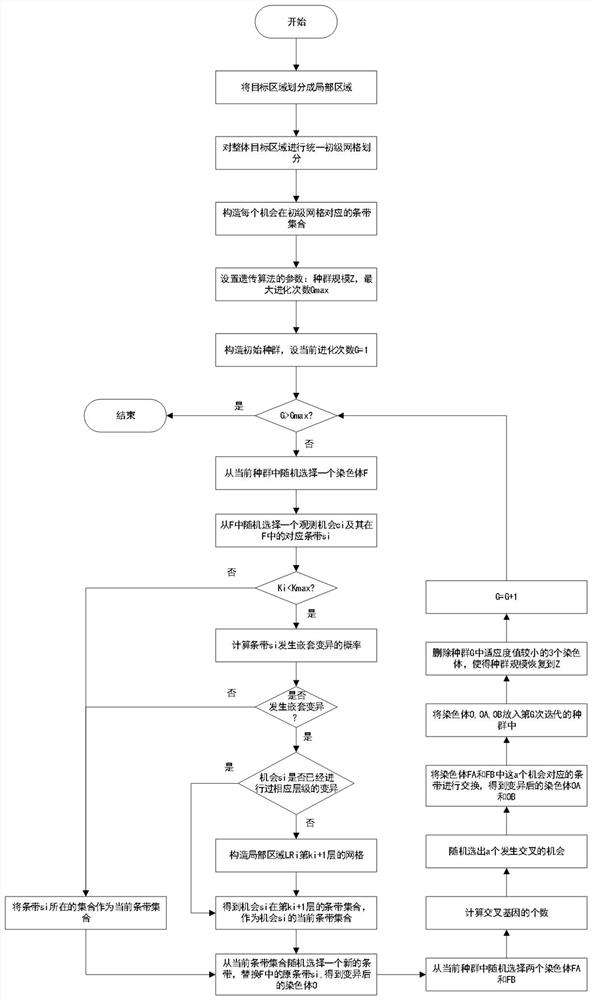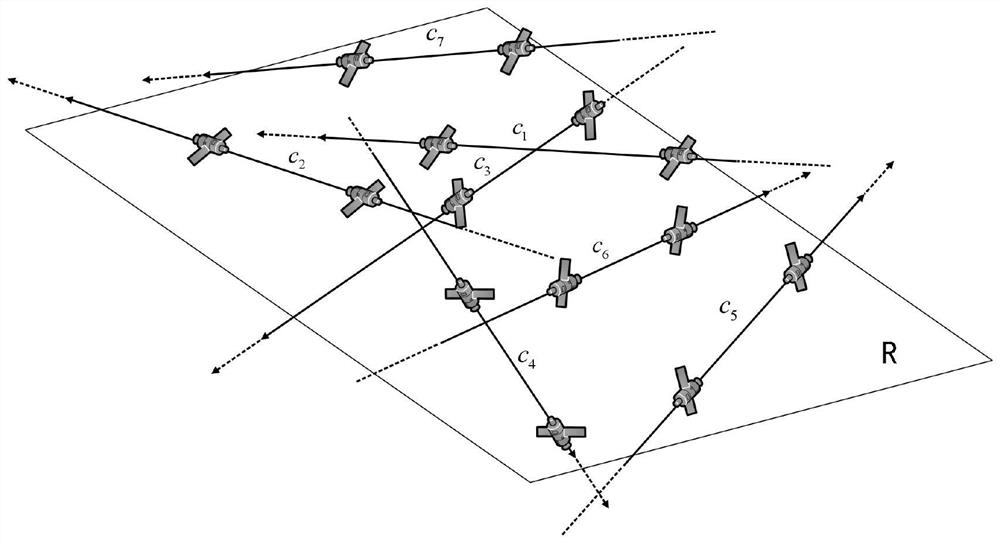Multi-satellite region observation planning method based on adaptive genetic algorithm
A genetic algorithm and self-adaptive technology, applied in the field of multi-satellite regional observation planning based on self-adaptive genetic algorithm, can solve problems such as large computational burden and search burden, unfavorable scheme combination, large stripe, etc.
- Summary
- Abstract
- Description
- Claims
- Application Information
AI Technical Summary
Problems solved by technology
Method used
Image
Examples
Embodiment Construction
[0046] In this example, if figure 2 As shown, a multi-satellite regional observation planning method based on adaptive genetic algorithm is applied to the observation task where multiple satellites jointly observe a target area R, assuming that the observation time window set of all satellites is C={c 1 ,c 2 ,...,c i ,...,c n},c i Indicates the i-th observation opportunity, n indicates the total number of observation opportunities; use |R| to indicate the area of the target region R; use Indicates the i-th observation opportunity c i The corresponding local area; use K to represent the current grid level, and set the maximum nesting level to K max ;use Indicates the i-th observation opportunity c i Constitute a set of strips on the K-th layer grid, where, Indicates the i-th observation opportunity c i The j-th strip constructed on the K-th layer, Indicates the i-th observation opportunity c i The number of stripes constructed at layer K; for example figure 1...
PUM
 Login to View More
Login to View More Abstract
Description
Claims
Application Information
 Login to View More
Login to View More - R&D
- Intellectual Property
- Life Sciences
- Materials
- Tech Scout
- Unparalleled Data Quality
- Higher Quality Content
- 60% Fewer Hallucinations
Browse by: Latest US Patents, China's latest patents, Technical Efficacy Thesaurus, Application Domain, Technology Topic, Popular Technical Reports.
© 2025 PatSnap. All rights reserved.Legal|Privacy policy|Modern Slavery Act Transparency Statement|Sitemap|About US| Contact US: help@patsnap.com



